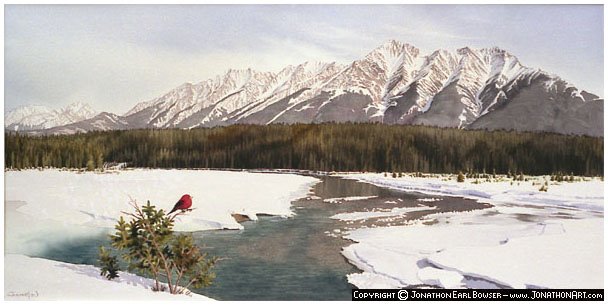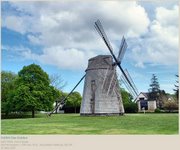I apologize, my last post included some oddities. It seems that my scribefire added some unusual spacing when I tried to edit my work last week, placing much of the word earlier through the sentence that followed. And, tired as I was, I didn't bother with a spell check. Now I have to describe what that brain fart spelled like. Perhaps I'd better not.
Three weeks to the surgery. Anxiety is building. Never mind the rational side that understands that it's a simple procedure...
On to the fun stuff. I'd touched upon the geography of D'oril a bit back, thought I'd try and expound further on the confederacy, as well as explain my (still in the formative stage) thoughts on the history of the lands.
The confederacy is split by an extensive mountain range into two halves, the eastern and western reaches (in some of my writing, I"ve referred to them as marches, I'll sort out the naming conventions later). The western half is heavily influenced by it's sporadic access to the western ocean, and bears a slight resemblence to Norway (Think fjords and rough coastline) and Washington state. Trade cartels grew from the few widely scattered towns that have reliable access to the ocean, the further south, the larger the towns and greater wealth. Prior to the formation of the confederacy, these towns were fairly independent of each other, though a few feudal strongholds did form. As a result, the mercantile cartels wielded (and still wield) a fair amount of influence within the confederacy, they have no direct representative on the council, but quite a few of the barons chosen to represent the different regions of the western marches are chosen because of their strong ties to the cartels. This is especially true of the south central region, where several large baronries formed out of some very wealthy mercantile families.
Further to the south along the western coast, the land becomes less rugged, and a more agricultural and feudal society grew. Some of the baronries there have a much longer history, and deem themselves "the true center of the confederacy", for at first, it was the expansion of their lands that provided the core of the early confederacy as they linked up with the largest of the eastern duchies. The traditionalists, as they see themselves, have much less of a tie to trade, and hold a rather dim view of their mercantile-oriented cousins to the north. The society is one of rigid class distinction, clear patriarchal lineage, and a severe (and successful) military tradition.
The southernmost of the eastern reaches are likewise traditionalists, with a much stronger hierachy, where the feudal lords share power with a church-like organization that influences much of the society. Originally, the religion (and I use this term loosely, for I don't intend to parallel any historical churches) focused on education, especially scientific, philosophic, and magical researches. A guild like power structure formed whereby the feudal lords each received an appointed advisor from the religious side of society, who often unofficially shared power with the lord, and occasionally even ruled. The religious power structure began breaking down with the formation of the confederacy, as well as the formation of splinter groups that sprang up with the opening of the frontier to the north.
It is the northern part of the eastern reaches that had the first (in "modern" times) contact with the K'tath of D"oril. Early on, it developed a frontier like atmosphere, with riches obtainable, under the threat of the dangers of the wilds. Think "wild west", gold rushes, timber, wide open spaces. Into this dangerous frontier came many unhappy with the rigid structures of the south, as well as mercantile interests looking to gain even more wealth. Here is where the archtypical adventurers of the IFGS came together. Now I just have to define... When...
At anyrate, there's a lot more to it, and I'll post more as I dig through my notes and cobwebs. Ask away, I'm sure there are lots of gaps, and answering questions will only help me solidify my thoughts...
Clear skies,
Jim

Three weeks to the surgery. Anxiety is building. Never mind the rational side that understands that it's a simple procedure...
On to the fun stuff. I'd touched upon the geography of D'oril a bit back, thought I'd try and expound further on the confederacy, as well as explain my (still in the formative stage) thoughts on the history of the lands.
The confederacy is split by an extensive mountain range into two halves, the eastern and western reaches (in some of my writing, I"ve referred to them as marches, I'll sort out the naming conventions later). The western half is heavily influenced by it's sporadic access to the western ocean, and bears a slight resemblence to Norway (Think fjords and rough coastline) and Washington state. Trade cartels grew from the few widely scattered towns that have reliable access to the ocean, the further south, the larger the towns and greater wealth. Prior to the formation of the confederacy, these towns were fairly independent of each other, though a few feudal strongholds did form. As a result, the mercantile cartels wielded (and still wield) a fair amount of influence within the confederacy, they have no direct representative on the council, but quite a few of the barons chosen to represent the different regions of the western marches are chosen because of their strong ties to the cartels. This is especially true of the south central region, where several large baronries formed out of some very wealthy mercantile families.
Further to the south along the western coast, the land becomes less rugged, and a more agricultural and feudal society grew. Some of the baronries there have a much longer history, and deem themselves "the true center of the confederacy", for at first, it was the expansion of their lands that provided the core of the early confederacy as they linked up with the largest of the eastern duchies. The traditionalists, as they see themselves, have much less of a tie to trade, and hold a rather dim view of their mercantile-oriented cousins to the north. The society is one of rigid class distinction, clear patriarchal lineage, and a severe (and successful) military tradition.
The southernmost of the eastern reaches are likewise traditionalists, with a much stronger hierachy, where the feudal lords share power with a church-like organization that influences much of the society. Originally, the religion (and I use this term loosely, for I don't intend to parallel any historical churches) focused on education, especially scientific, philosophic, and magical researches. A guild like power structure formed whereby the feudal lords each received an appointed advisor from the religious side of society, who often unofficially shared power with the lord, and occasionally even ruled. The religious power structure began breaking down with the formation of the confederacy, as well as the formation of splinter groups that sprang up with the opening of the frontier to the north.
It is the northern part of the eastern reaches that had the first (in "modern" times) contact with the K'tath of D"oril. Early on, it developed a frontier like atmosphere, with riches obtainable, under the threat of the dangers of the wilds. Think "wild west", gold rushes, timber, wide open spaces. Into this dangerous frontier came many unhappy with the rigid structures of the south, as well as mercantile interests looking to gain even more wealth. Here is where the archtypical adventurers of the IFGS came together. Now I just have to define... When...
At anyrate, there's a lot more to it, and I'll post more as I dig through my notes and cobwebs. Ask away, I'm sure there are lots of gaps, and answering questions will only help me solidify my thoughts...
Clear skies,
Jim



No comments:
Post a Comment